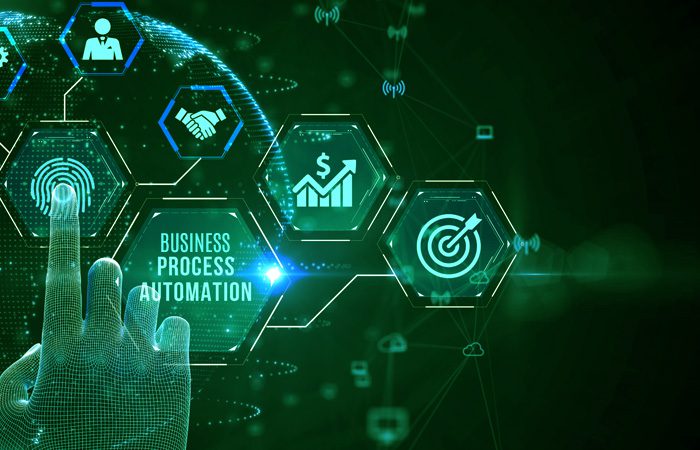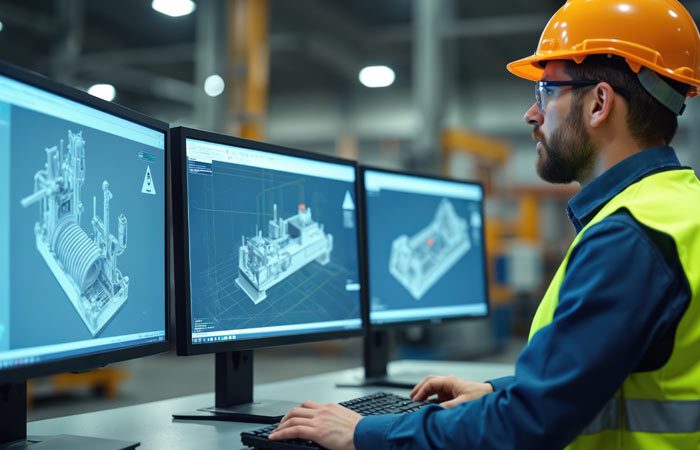
How RPA is Revolutionizing Business Processes by Evolving an Era of Hyperautomation?
In the ever-evolving landscape of digital transformation, organizations are constantly seeking innovative solutions to streamline operations, boost efficiency, and drive competitive advantage. Robotic Process Automation (RPA) has emerged as a powerful tool in this endeavor, enabling the automation of repetitive tasks and mundane processes. However, as technology progresses and business requirements become more complex, RPA is evolving into something far more transformative: hyperautomation.
Understanding Hyperautomation
Hyperautomation represents the next phase in the evolution of automation, where organizations leverage a combination of technologies such as RPA, artificial intelligence (AI), machine learning (ML), process mining, and advanced analytics to automate end-to-end business processes. Unlike traditional RPA, which focuses on rule-based, deterministic tasks, hyperautomation encompasses a broader spectrum of automation capabilities, including cognitive automation, predictive analytics, and autonomous decision-making.
At its core, hyperautomation aims to drive operational excellence by automating not just individual tasks, but entire business processes across the organization. By integrating various automation technologies and leveraging data-driven insights, hyperautomation enables organizations to achieve unprecedented levels of efficiency, agility, and innovation.
The Evolution of RPA to Hyperautomation
The transition from RPA to hyperautomation represents a paradigm shift in how organizations approach automation. While RPA initially focused on automating repetitive tasks within siloed processes, hyperautomation takes a holistic view of automation, orchestrating workflows across departments, systems, and technologies.
Cognitive Automation
One of the key components of hyperautomation is cognitive automation, which combines RPA with AI and ML capabilities to enable intelligent decision-making and natural language processing. Unlike traditional RPA bots, which follow predefined rules and instructions, cognitive automation systems can analyze unstructured data, interpret context, and make autonomous decisions based on learned patterns.
For example, cognitive RPA bots can analyze customer inquiries, extract relevant information from emails or chat transcripts, and generate personalized responses without human intervention. By harnessing the power of cognitive automation, organizations can improve customer experience, enhance decision-making, and drive business growth.
Process Discovery and Mining
Another critical aspect of hyperautomation is process discovery and mining, which involves analyzing existing business processes to identify automation opportunities and inefficiencies. Through advanced analytics and process mining techniques, organizations can gain insights into process variations, bottlenecks, and compliance issues, enabling them to optimize workflows and automate repetitive tasks effectively.
By leveraging process discovery tools, organizations can accelerate the automation journey, reduce implementation time, and achieve faster ROI. Moreover, continuous process monitoring and optimization ensure that automation initiatives remain aligned with business objectives and evolving customer needs.
Autonomous Decision-Making
In the era of hyperautomation, autonomous decision-making plays a pivotal role in driving operational efficiency and agility. By combining RPA with predictive analytics and prescriptive modeling, organizations can automate decision-making processes, such as resource allocation, demand forecasting, and risk management.
For example, autonomous decision-making algorithms can analyze historical data, identify trends and patterns, and recommend optimal courses of action in real-time. By minimizing human intervention and leveraging data-driven insights, organizations can mitigate risks, seize opportunities, and stay ahead of the competition in today’s dynamic business environment.
Unlocking the Benefits of Hyperautomation
The shift towards hyperautomation offers organizations a multitude of benefits, ranging from improved efficiency and productivity to enhanced agility and innovation. By embracing a holistic approach to automation, organizations can:
- Drive Operational Excellence: By automating end-to-end processes, organizations can streamline operations, reduce manual errors, and improve overall efficiency.
- Enhance Customer Experience: By leveraging cognitive automation and predictive analytics, organizations can deliver personalized experiences, anticipate customer needs, and drive customer satisfaction and loyalty.
- Foster Innovation: By freeing up human capital from repetitive tasks, hyperautomation empowers employees to focus on value-added activities, such as innovation, creativity, and strategic decision-making.
- Ensure Compliance and Risk Management: By automating compliance processes and leveraging real-time analytics, organizations can mitigate risks, ensure regulatory compliance, and enhance data security.
Overcoming Challenges and Driving Adoption
While the benefits of hyperautomation are undeniable, organizations must overcome several challenges to successfully implement and scale automation initiatives. These include:
- Legacy Systems and Infrastructure: Legacy systems and disparate IT landscapes pose integration challenges and hinder the adoption of automation technologies.
- Skills Gap and Change Management: Lack of skilled resources and resistance to change can impede automation initiatives and limit their effectiveness.
- Data Quality and Governance: Poor data quality and governance practices can undermine the accuracy and reliability of automation solutions, leading to suboptimal outcomes.
To address these challenges, organizations must prioritize investment in technology, talent development, and organizational change management. By fostering a culture of innovation, collaboration, and continuous learning, organizations can unlock the full potential of hyperautomation and drive sustainable business growth.
As we look to the future, the trajectory of hyperautomation is poised for exponential growth. Advancements in AI, ML, and analytics will further enhance the capabilities of automation technologies, enabling organizations to automate complex decision-making processes and drive innovation at scale.
Moreover, the democratization of automation tools and platforms will empower organizations of all sizes to embrace hyperautomation and realize its transformative potential. From startups to enterprises, every organization will have the opportunity to leverage automation as a strategic differentiator and fuel their digital transformation journey.
Thus, the evolution of RPA into hyperautomation represents a quantum leap in how organizations approach automation. By combining RPA with cognitive automation, process mining, and autonomous decision-making, hyperautomation enables organizations to achieve unprecedented levels of efficiency, agility, and innovation. As organizations embrace the era of hyperautomation, they will unlock new opportunities, drive sustainable growth, and redefine the future of work.


